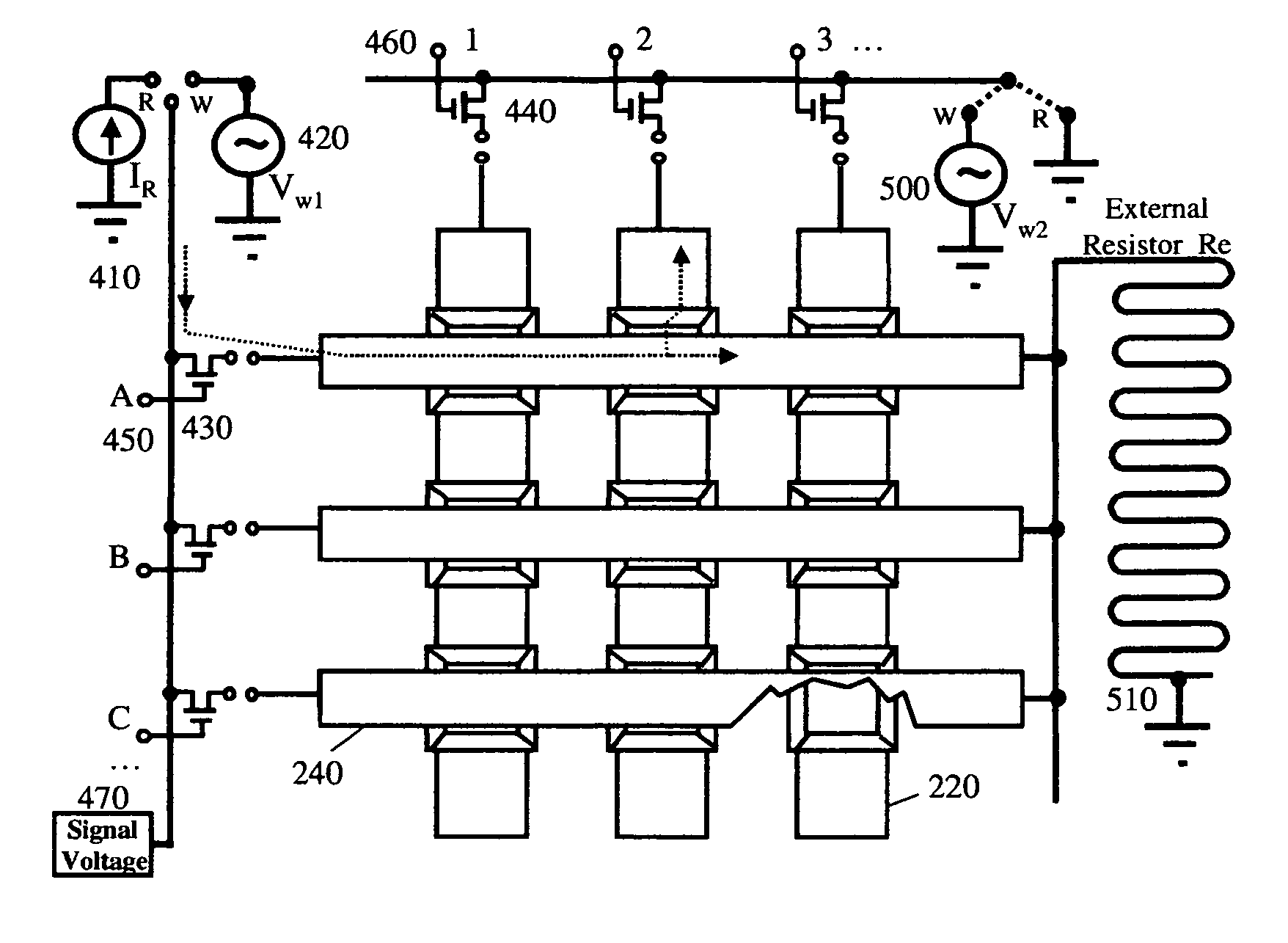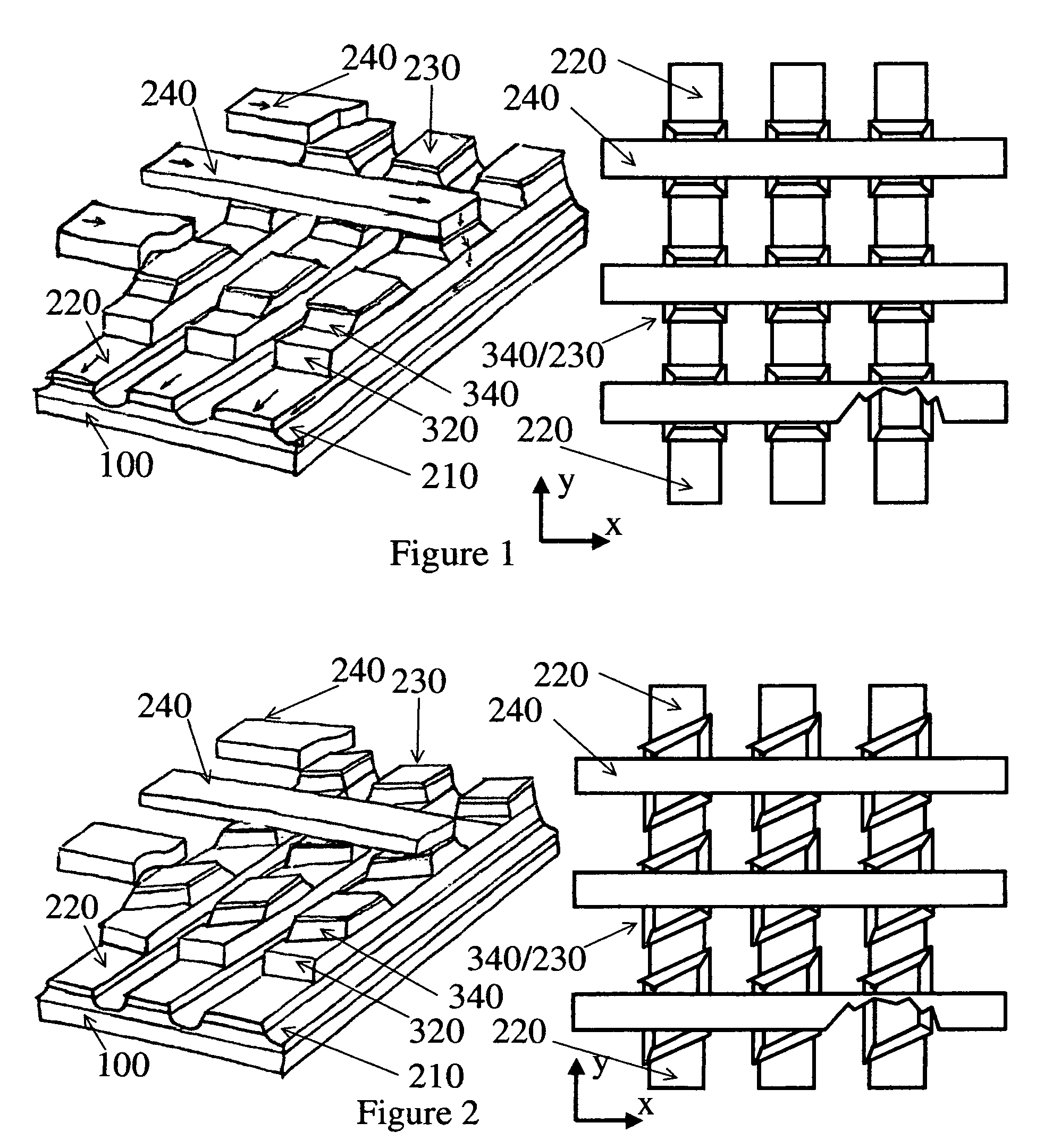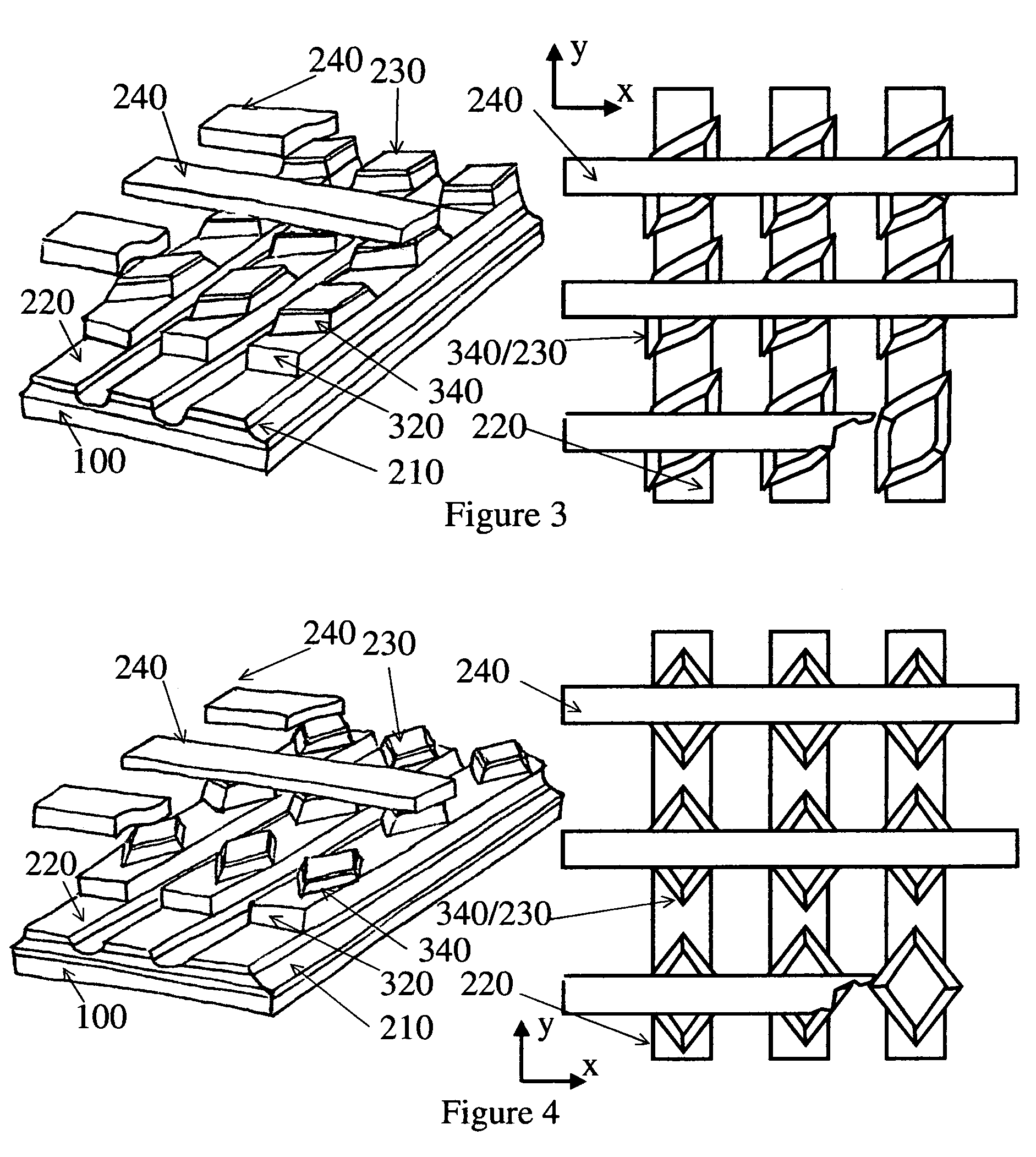Method for improving the stability, write-ability and manufacturability of magneto-resistive random access memory
a random access memory and magneto-resistive technology, applied in the field of improving the stability, write-ability and manufacturability of magneto-resistive random access memory, can solve the problems of poor write-ability, extreme cost, and sometimes inability to complete switching between states
- Summary
- Abstract
- Description
- Claims
- Application Information
AI Technical Summary
Benefits of technology
Problems solved by technology
Method used
Image
Examples
Embodiment Construction
[0006]The invention contains for following Figures:
[0007]FIG. 1: shown an example of basic STT-based MRAM, but using shared PL or AFC (for both longitudinal and perpendicular configurations) in contras with conventional STT-based MRAM;
[0008]FIG. 2: shown an example STT-based MRAM, but using shared PL or AFC, FL is in shape of parallelogram;
[0009]FIG. 3: shown an example STT-based MRAM, but using shared PL or AFC, FL is in shape of smoothed parallelogram;
[0010]FIG. 4: shown an example STT-based MRAM, but using shared PL or AFC, FL is in shape of rhombus;
[0011]FIG. 5: shown another example STT-based MRAM, but using shared PL or AFC, FL is in shape of rhombus, the width of rhombus is restricted within bottom lead range;
[0012]FIG. 6: shown an example STT-based MRAM, but using shared PL or AFC, FL is in shape of rhombus, and with V shape top leads;
[0013]FIG. 7: shown an example of process: deposition of layers, bottom leads milling or / and etching, deposition of insulator, and CMP;
[0014]F...
PUM
 Login to View More
Login to View More Abstract
Description
Claims
Application Information
 Login to View More
Login to View More - R&D
- Intellectual Property
- Life Sciences
- Materials
- Tech Scout
- Unparalleled Data Quality
- Higher Quality Content
- 60% Fewer Hallucinations
Browse by: Latest US Patents, China's latest patents, Technical Efficacy Thesaurus, Application Domain, Technology Topic, Popular Technical Reports.
© 2025 PatSnap. All rights reserved.Legal|Privacy policy|Modern Slavery Act Transparency Statement|Sitemap|About US| Contact US: help@patsnap.com



